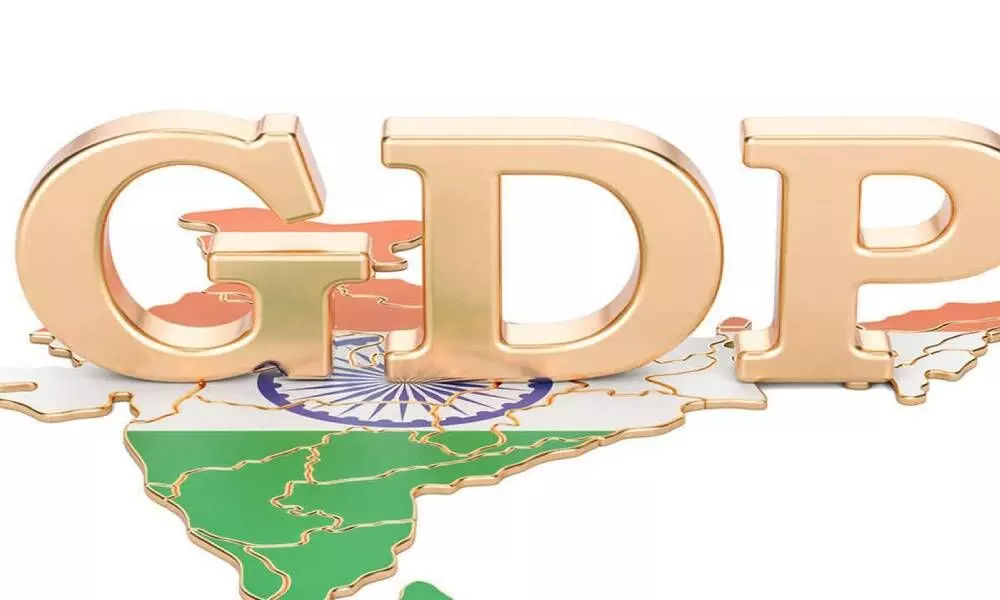A fresh stimulus package must to spur GDP growth
Overwhelming of health infrastructure led to regional lockdowns that inevitably affected growth momentum
image for illustrative purpose

In the midst of gloom over the economic outlook owing to the Covid surge, reports that the government is considering a fresh stimulus package for badly affected sectors to enhance hope for the industry as it helps the current scenario improve in coming months. The prospects for growth had appeared to be looking up at the outset of 2021. Industrial and commercial activity had risen significantly and key indicators hinted at higher growth in the rest of the year.Several upbeat projections were made regarding GDP growth for 2021-22 in the expectation that there would be a significant bounce back from the contraction experienced during the year of the pandemic.
The scenario changed completely with the onset of the second wave in late March and the steep rise in cases during April and May. The significant alteration in the spread of the pandemic this time was that rural areas were affected much more widely, while urban centres like Delhi and Mumbai faced an enormous hike in cases. The overwhelming of health infrastructure led to regional lockdowns that inevitably affected the growth momentum that had begun in the early part of 2021. With the second wave expected to subside by the middle or end of June, it now seems clear the expected revival will begin only in the second quarter of the current fiscal (July –September ).
Several agencies have already revised their growth projections for the current fiscal as compared to last year's contraction of 7.5 per cent. British investment bank, Barclays, for instance has revised its growth estimate from 10 to 9.2 per cent for 2021-22. It has even suggested that in case of a third wave, this could fall to 7.7 per cent. The International Monetary Fund, which had upped its prediction from 11.5 to 12.5 per cent in early April has now said it would revisit these estimates in July taking into account the impact of the second wave.Wall Street brokeragefirm Goldman Sachshad already revised its numbers downwards from 11.7 to 11.1 per cent owing to the expected impact of regional lockdowns on industrial and commercial activity. Similarly rating agency Moody's projections have dipped from 13.7 to 9.3 per cent.
The Reserve Bank of India has so far retained its growth forecast of 10.5 per cent, but is expected to revisit it next month, given the unexpected ferocity of the Covid surge in April and May.
The government's proposals to provide some form of stimulus to the worst affect segments of the economy are thus welcome though these have come a bit late in the day. The sectors apparently identified for special support are tourism, aviation and hospitality industries, the ones that have been virtually devastated by the pandemic. In fact, it had been expected that a special package for these sectors would be outlinedat the time of budget presentation. Even the first wave had a disastrous effect on the health of these industries and on overall unemployment levels, given that these are all labour-intensive sectors. In a bid for revival, tourism industry associations are currently seeking cuts in GST rates as these are virtually double the levels of neighbouring countries. The hospitality industry which is closely linked to tourism is equally battered as foreign tourism has been completely shut down for the past year, while domestic tourism only had a brief spurt during the period from January to March. As for restaurants which provide jobs to lakhs of workers, most are closed due to curbs on movements in many parts of the country. Workers have thus been either migrating back to villages or facing a precarious survival in the cities.
As for the aviation industry, government estimates are that as many as 39,000 jobs were lost during the period from April to September 2020. This covered airlines, airports, ground handling companies and cargo operators. In addition, losses of domestic airlines are estimated at over Rs 14,000 crores in the 2020-21, though these may be somewhat lower at about Rs10,000 crores in the current fiscal, according to ratings agency, Crisil. It is thus high time for the government to step in and provide some form of support to these critical sectors of the economy. Tax relief, for instance, would provide some cushion for these sectors. This could include bringing aviation turbine fuel under the purview of the Goods and Services Tax (GST). In addition, existing GST rates on both the tourism and hospitality industries need to be reviewed in the light of the losses being suffered by them. Easier access to credit and deferment of loan repayments could be another way of helping those facing liquidity problems.
Some innovative solutions have been made in other countries to help revival of restaurants such as providing vouchers to citizens that can be redeemed only at these outlets.
It is useful in this context to recall that a recent study by the Azim Premji University has estimated that 230 million people fell into poverty last year due to the pandemic and the second wave threatens to make things even worse. A tangible rescue package is thus urgently needed to ensure vulnerable industries survive this crisis. This will simultaneously provide sustainable livelihoods for the millions of workers employed in these worst affected sectors of the economy.

